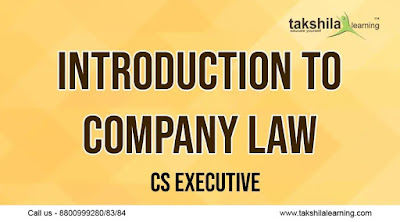About the CS Executive Company Law:
The Companies Act is mammoth legislation. The Companies Act, 1956 was one of the lengthiest Act with 658 Sections which was repealed by The Companies Act 2013 containing 470 Sections. The new Act was a need of the hour as the 50 years old law required a new structure with added perspectives. It Act is nothing but all about companies since its incorporation till its winding up. In spite of several sections to understand this statue, we just need to understand a few basic principles.
Structure:
In legal sense, Company is a business association. A group of persons associate themselves to conduct a business under a common name. They invest their amounts into business under a common named entity, by way of subscription of shares. They appoint personnel to look after and direct the business, known well as Directors. When the business makes a profit, it is distributed to the holders of the share. In case of losses, the holders of share are held responsible only for their limited liability.
Unlike other modes of business structure like sole proprietorship firm or partnership firm, a Company is also a form of organization. To be more appropriate, the form that contains the optimal advantage. Lets’ look into few basic concepts but not limited which helps us to understand better along with the comparative study as to why we refer it as optimal form.
Browse Related Topic Introduction of Company Act 2013
- Legal Personality: The status of legal personality is the special feature in the company form of organization. Here comes the question, is mere existence means the legal personality? No.
The key element of determining it is to examine the legal status before law. The key words are “to Act in its own name” and “capable to sue and being sued in its own name”.
Keep Reading Underlying Concept of Company Law and Doctrine of Alter Ego .(Introduction to Company Law | CS Executive)
Takshila Learning provide Online Classes for CS Executive, for CS professional and for CS Executive Entrance Test (CSEET EXAM) so that you can prepare on your own, through CS Executive Online Classes or CS Executive Pendrive Classes which you can access at your own space and according to your timings while working or doing Job as well.
For more details about #CSExecutive #CSExecutiveCompanyLaw #CSExecutivecourse
Call for online Company law Video Lectures at -8800999280/83/84

Comments
Post a Comment
Thank you we will contact ASAP.